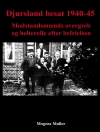This book consists of ten essays that examine the ways in which language has been used to evoke what Lawrence L. Langer calls the ‘deathscape’ and the ‘hopescape’ of the Holocaust. The chapters in this collection probe the diverse impacts that site visits, memoirs, survivor testimonies, psychological studies, literature and art have on our response to the atrocities committed by the Germans during World War II. Langer also considers the misunderstandings caused by erroneous, embellished and sentimental accounts of the catastrophe, and explores some reasons why they continue to enter public and printed discourse with such ease.
Tabla de materias
1. The Afterdeath of the Holocaust.- 2. My Life with Holocaust Death.- 3. Redemptive and Unredemptive Holocaust Memory.- 4. Representing and Misrepresenting the Holocaust.- 5. Charlotte Delbo’s Auschwitz and After.- 6. Holocaust Fact and Holocaust Fiction: The Dual Vision of H.G. Adler.- 7. Beyond Testimony: The Literary Design of Primo Levi’s If This is a Man. 8. The Legacy of Holocaust Deathscapes.- 9. Memory and Invention in Olga Lengyel’s Five Chimneys.- 10. Ner Ot: The Memorial Candle as Symbol in the Art of Samuel Bak.
Sobre el autor
Lawrence L. Langer is Emeritus Professor of English at Simmons University in Boston, USA and a renowned scholar of Holocaust literature.












